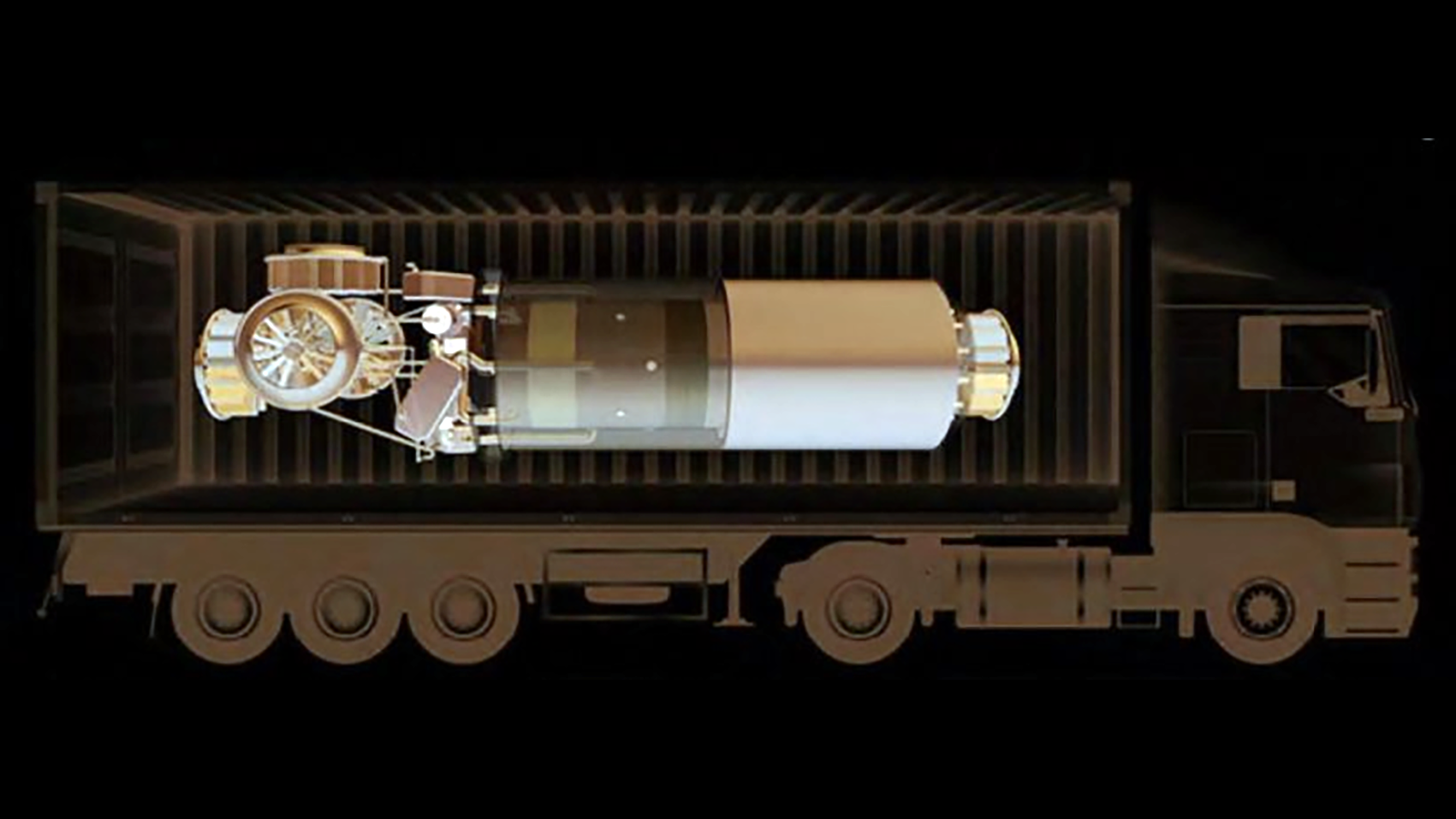 US-based X-Energy Reactor Company and the US Department of Defense (DOD) have agreed to expand the contract under the Project Pele initiative to develop a transportable, cost-effective advanced nuclear microreactor prototype for use in remote military locations. X-energy said it expects to advance the design of its prototype – which could also be used for commercial or industrial use in civilian applications – through an award of $17.49m within the existing DOD contract. This will be a second design to be developed under Project Pele.
US-based X-Energy Reactor Company and the US Department of Defense (DOD) have agreed to expand the contract under the Project Pele initiative to develop a transportable, cost-effective advanced nuclear microreactor prototype for use in remote military locations. X-energy said it expects to advance the design of its prototype – which could also be used for commercial or industrial use in civilian applications – through an award of $17.49m within the existing DOD contract. This will be a second design to be developed under Project Pele.
DOD’s Strategic Capabilities Office (SCO) launched Project Pele in 2019 to develop a fourth-generation nuclear microreactor to deliver energy to support remote and austere environments. The project is based on the 2019 National Defense Authorization Act, in which Congress directed DOD and the Department of Energy (DOE) to develop a plan to design, build, and test a microreactor at a DOD installation by December 2027. In April 2022 DOD’s Strategic Capabilities Office (SCO) formally released a record of decision (ROD) to proceed with the programme specifying a high-temperature gas-cooled (HTGR) mobile microreactor able to produce 1-5 MWe for more than three years without refuelling.
SCO considered two designs selected in a preliminary design competition – an HTGR design from BWX Technologies (BWXT) Advanced Technologies and X-energy’s Mobile Nuclear Power Plant. In June 2022 BWXT’s microreactor was selected for development. The design was for a HTGR fuelled by TRISO (TRIstructural-ISOtropic) high-assay low-enriched uranium (HALEU) transportable in commercially available shipping containers. The prototype is expected to be completed in 2024 for operation in 2025, SCO Programme Manager Jeff Waksman told an American Nuclear Society webinar in August.
"We are now ordering hardware, we are making fuel, we are forging the containment vessel, we're making moderator blocks … we are no longer a paper reactor, an academic reactor, we are now becoming very real," he said. By early 2025, the reactor is expected to be shipped to Idaho National Laboratory (INL) where it will be fuelled and shipped to a desert location for initial testing before undergoing a final operational readiness review. Testing and operation of the prototype reactor will be regulated by the DOE rather than the Nuclear Regulatory Commission (NRC).
Reactor fuel for Project Pele is to be produced from DOE highly enriched uranium (HEU) currently stored at the Y-12 National Security Complex in Oak Ridge, Tennessee . The fuel will be converted from a metal to an oxide at BWXT’s Nuclear Fuel Services facility in Erwin, Tennessee, and then down-blended to HALEU and fabricated into TRISO reactor fuel at the BWXT facility in Lynchburg, Virginia.
According to Wakeman, the idea for the SCO-led project originated at US Indo-Pacific Command (INDOPACOM) in Hawaii, which is reflected in the project’s name. Pele is “a backronym for ‘Portable Energy for Lasting Effects,’ but no one uses the backronym. Pele is really just named after the Hawaiian goddess of fire and power,” he said.
X-energy President Harlan Bowers, who led the project team during the initial phase of work said: “We learned a tremendous amount while working through the first phase of Project Pele with subject matter experts at the Department of Defense. We intend to build on the knowledge and experience … to create a clean, practical, and cost-effective microreactor to be competitive with fossil fuel-based power generation used today. We expect this next phase of work to include the refining of our design, prototype testing, and initiation of reviews with the US Nuclear Regulatory Commission to ensure our microreactor meets safety standards and can be licensed for civilian use in the US.”
The DOD estimates that it uses approximately 30 TWh of electricity a year and more than 10m gallons of fuel a day. These figures are expected to increase due to anticipated electrification of the vehicle fleet and maturation of future energy-intensive capabilities. Small, transportable nuclear reactors are expected to help address this growing demand while supporting “mission-critical operations” in remote and austere environments.
Under the expanded contract, X-energy expects to provide DOD with two microreactor designs through Project Pele, while also providing a commercial pathway for the adoption of microreactor technology in other applications. X-energy’s transportable microreactor is designed to generate in the range of 3-5MWe and should be cost-competitive with remote diesel power. X-energy will initiate pre-licensing engagement with the NRC, in order to enable a broad range of deployment possibilities to decarbonise off-grid, remote, or small-scale grid resiliency needs. Although X-energy has not provided details of its Project Pele design, in 2020 it revealed it was working on a Xe-Mobile power generation system which will use X-energy’s proprietary TRISO-X fuel.
Project Pele programme manager Dr Jeff Waksman said that, due to their extraordinary energy density, nuclear reactors have the potential to serve multiple critical functions for meeting resiliency needs in contested logistical environments. “By developing two unique designs, we will provide the Services with a broad range of options as they consider potential uses of nuclear power for both installation and operational energy applications in the near future,” he noted.
Image: Artist’s impression of a transportable nuclear microreactor



